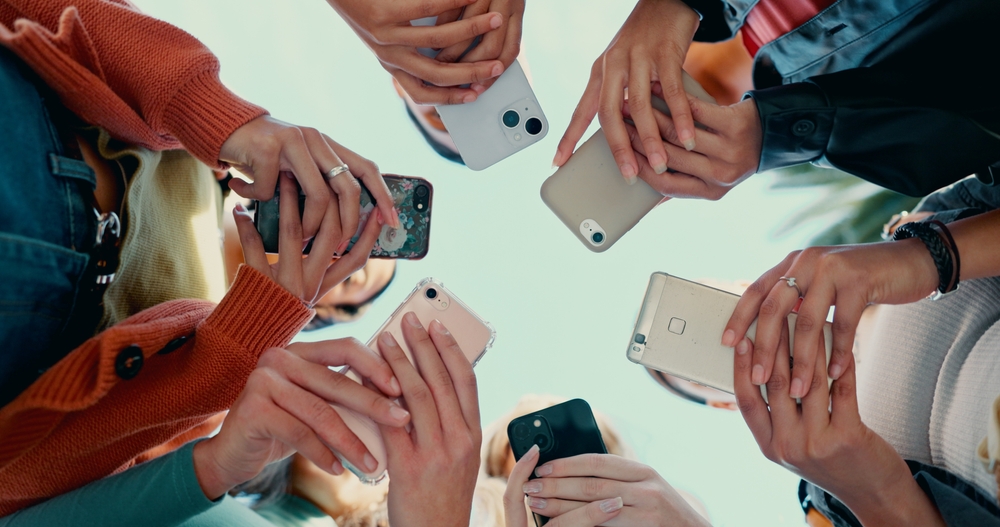The influencer marketing industry stands at an inflection point. After years of explosive growth, brands now face a sobering reality: not all influencers deliver what they promise, and measuring true impact remains maddeningly difficult. Enter artificial intelligence, which has moved from experimental novelty to operational necessity in just a few short years. In 2026, AI won’t just change how we find and work with influencers—it’s fundamentally rewriting the rules of authenticity, performance prediction, and campaign execution. For marketing leaders who’ve watched budgets balloon while ROI stays frustratingly opaque, these tools represent more than efficiency gains. They represent survival.
PR Overview
The Authenticity Crisis and AI’s Response
Fake followers have plagued influencer marketing since its inception, but the scale of the problem has reached crisis proportions. Marketing managers who once relied on follower counts and engagement rates as proxies for influence now understand these metrics can be manufactured with alarming ease. The financial stakes are significant—brands waste substantial portions of their influencer budgets on partnerships that deliver no real business value.
AI-powered natural language discovery tools have emerged as the first line of defense. These systems analyze the actual content influencers produce, examining language patterns, topic consistency, and audience interactions to determine genuine expertise and alignment with brand values. This represents a fundamental shift from vanity metrics to substance-based vetting. Rather than asking “How many followers does this person have?” the question becomes “What do they actually talk about, and does their audience genuinely care?”
Advanced video analytics take this further by detecting anomalies in engagement patterns that human reviewers would miss. When an influencer’s likes spike unnaturally after periods of dormancy, or when comment patterns show bot-like repetition, AI flags these red flags before contracts get signed. The technology examines follower growth curves, looking for the telltale signs of purchased audiences—sudden jumps that don’t correlate with content quality or posting frequency.
The industry’s shift toward trust-based marketing reflects a broader maturation. AI verification tools don’t just protect brands from fraud; they help build partnerships grounded in authentic relationships rather than inflated reach numbers. This matters because audiences have grown increasingly skeptical of influencer endorsements. When brands can demonstrate they’ve thoroughly vetted their partners using objective, data-driven methods, that credibility extends to the campaigns themselves.
Predictive Analytics: Seeing Around Corners
The ability to forecast campaign performance before spending a dollar represents perhaps AI’s most valuable contribution to influencer marketing. Predictive performance analytics analyze historical data across thousands of campaigns to identify patterns that correlate with success. These models consider creator track records, audience demographics, content formats, posting times, and dozens of other variables to generate probability scores for different outcomes.
For B2B marketers especially, this capability addresses a longstanding pain point. B2B influencer campaigns typically involve longer sales cycles and more complex attribution models than consumer campaigns. Predictive AI can anticipate which creators will drive not just engagement but actual pipeline contribution, helping justify influencer spend to CFOs who demand measurable returns.
The technology works by building profiles of high-performing creators based on past campaign data. When evaluating a new potential partner, the AI compares their characteristics—audience composition, engagement patterns, content style—against these success profiles. The output isn’t just a yes-or-no recommendation but a nuanced assessment: this creator will likely perform well for awareness goals but may underdeliver on conversion; this one shows strong potential for video content but weaker results with static posts.
Real-time optimization capabilities take predictive analytics a step further. Rather than waiting until a campaign ends to assess results, AI monitors performance continuously and suggests mid-flight adjustments. If certain content formats or posting times show stronger early traction, the system can recommend doubling down on what’s working while the campaign is still active. This agility transforms influencer marketing from a “launch and hope” exercise into a managed, optimizable channel.
Short-form video has become a particular focus for predictive tools, given its dominance across platforms. Understanding which creators can break through the noise in crowded feeds, and predicting which video concepts will resonate before production begins, provides significant competitive advantage. Brands using these tools report they can test multiple creative approaches virtually, selecting only the highest-probability concepts for actual production.
AI-Generated Personas: Promise and Peril
The emergence of AI-generated influencer personas represents the most controversial development in the space. These digital entities—created entirely by algorithms—can produce content, interact with audiences, and theoretically deliver campaign results without involving human creators. The technology has advanced rapidly, with AI personas now capable of maintaining consistent personalities, responding to comments, and even appearing in video content that’s nearly indistinguishable from human-created material.
Voice AI and chatbots enable these personas to engage audiences at scale, answering questions and maintaining relationships in ways that would be impossible for human influencers managing thousands of followers. Some brands have experimented with AI personas for customer support roles within influencer campaigns, using them to extend the reach of human creators rather than replace them entirely.
The reality, though, is that consumer trust remains firmly anchored to human authenticity. Research consistently shows audiences prefer real people, even with their imperfections, over algorithmically perfect digital entities. Smart brands use AI personas for testing and ideation—running scenarios to understand what messaging might resonate—but deploy human influencers for actual campaigns where trust and credibility matter.
AI-powered creator marketplaces have begun offering auto-matching services that pair brands with appropriate influencers, and some are experimenting with AI persona options. The technology remains in early stages, facing skepticism from both human creators worried about their livelihoods and consumers wary of inauthentic marketing. The most promising applications seem to be hybrid approaches: AI assists human creators with content ideation, scheduling, and audience analysis, but the human remains the face and voice of the partnership.
Campaign testing represents perhaps the most legitimate use case for AI personas. Before committing to expensive influencer partnerships, brands can use AI-generated personas to test different messaging approaches, content formats, and audience targeting strategies. This reduces risk and provides data to inform human creator briefs, making the eventual campaigns more likely to succeed.
The rapid adoption of AI in influencer marketing has outpaced the development of ethical guidelines and best practices. Intellectual property concerns loom large—when AI tools analyze creator content to generate insights or recommendations, who owns that data? When AI assists in content creation, how should attribution work? These questions lack clear answers, creating legal and ethical ambiguity.
Content originality presents another challenge. As AI tools become more sophisticated at generating influencer content, the line between human creativity and machine output blurs. Audiences have a right to know when they’re consuming AI-generated content, but disclosure practices remain inconsistent across the industry. Some creators use AI assistance without mentioning it; others prominently label AI contributions. The lack of standardization erodes trust.
The impact on human creators represents perhaps the most significant ethical concern. As brands turn to AI for efficiency and cost savings, will opportunities for human influencers shrink? The creator economy has provided income for millions of people worldwide. If AI personas or AI-assisted content production dramatically reduces demand for human creators, the social and economic consequences could be substantial.
Transparency emerges as the critical ethical principle. Brands should disclose when AI tools play significant roles in influencer selection, content creation, or audience interaction. This transparency extends to data practices—how is audience information collected, analyzed, and stored? What safeguards prevent misuse? Marketing leaders who establish clear ethical guidelines now will build stronger, more sustainable influencer programs than those who prioritize short-term efficiency over long-term trust.
Human oversight remains non-negotiable. AI can process data and identify patterns at superhuman speed, but it lacks judgment about brand values, cultural sensitivity, and strategic priorities. Every AI recommendation should pass through human review before implementation. This isn’t just about catching errors; it’s about maintaining the human element that makes influencer marketing work in the first place.
Building Your AI-Enabled Workflow
Integration doesn’t mean revolution—it means evolution. Marketing teams should start with influencer discovery and audience analysis, where AI delivers immediate value with minimal disruption. Tools that scan social platforms to identify potential partners based on content analysis and audience demographics can dramatically reduce the manual work of building prospect lists. This frees strategists to focus on relationship building and creative development rather than data gathering.
As comfort with AI grows, expand into content co-creation. AI tools can suggest topics, optimize posting times, and even generate draft captions or video concepts for human creators to refine. This collaboration between human creativity and machine efficiency often produces better results than either could achieve alone. The key is positioning AI as an assistant to creators, not a replacement.
Performance tracking and analytics represent the next integration stage. AI-powered dashboards that automatically collect data across platforms, calculate attribution, and generate insights save hours of manual reporting work. More importantly, they surface patterns and opportunities that might otherwise go unnoticed. When AI identifies that video content posted on Tuesday afternoons consistently outperforms other formats and times, that’s actionable intelligence that improves future campaigns.
The most sophisticated implementations use AI agents that can plan, execute, and optimize campaigns with minimal human intervention. These systems handle routine decisions—adjusting bid levels, reallocating budget between high and low performers, triggering content variations based on audience response—while escalating strategic questions to human decision-makers. This division of labor lets marketing teams manage more campaigns with the same headcount, or invest saved time in higher-value activities like creator relationship development.
Start small and measure everything. Pilot AI tools with a subset of campaigns, comparing results against traditional approaches. This builds internal confidence and generates the data needed to make the business case for broader adoption. Document what works and what doesn’t, creating a playbook that guides expansion. The brands succeeding with AI in influencer marketing aren’t necessarily the ones with the biggest budgets or most advanced technology—they’re the ones that approach implementation methodically, learn from each iteration, and maintain focus on business outcomes rather than technological novelty.
The competitive landscape demands this evolution. Brands that master AI-enabled influencer marketing will operate with significant advantages: better partner selection, higher campaign performance, more efficient resource allocation, and stronger audience trust through verified authenticity. Those that cling to manual processes and gut-feel decisions will find themselves outmaneuvered by more data-driven competitors.
The transformation of influencer marketing through AI isn’t coming—it’s here. The tools exist, the use cases are proven, and early adopters are already seeing results that justify the investment and effort required for implementation. For marketing leaders, the question isn’t whether to adopt AI but how quickly you can integrate it while maintaining the human authenticity that makes influencer marketing effective. Start with authenticity verification and predictive analytics, where ROI is most immediate. Build ethical guidelines that protect both your brand and the creator community. Test AI personas in controlled environments but keep humans at the center of your campaigns. Most importantly, view AI as an amplifier of human judgment rather than a replacement for it. The brands that get this balance right will define the next era of influencer marketing.
The Future Of Wellness Influencer Marketing: Authenticity Over Aesthetic
Wellness brands face a reckoning. The era of perfectly curated influencer feeds and aspirational...
How To Run Compliant Web3 Influencer Campaigns
Web3 projects face a precarious balancing act: they need influential voices to cut through market...
How AI Is Transforming Influencer Marketing
The influencer marketing industry stands at an inflection point. After years of explosive growth,...



